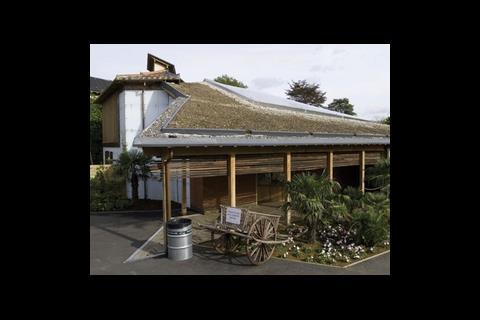CIBSE’s recently launched Sustainability Guide aims to broaden engineers’ understanding of the issue to increase their influence.
CIBSE is set to launch its first guide on sustainability. The Sustainability Guide has been prepared by Faber Maunsell to raise awareness of sustainability issues among building services engineers and enable them to offer clients comprehensive guidance on sustainability in buildings and more sustainable engineering solutions.
Although the UK is committed to reducing carbon emissions by 60% by 2050 to help stabilise atmospheric CO2 concentrations, current research by the Tyndall Centre shows that this reduction needs to be 90% to avoid dangerous climate change.
This news comes at a time when water shortages in the UK have prompted drought orders, reservoir levels are low and water demand is rising. Climate change and water shortages are the environmental problems with the highest profiles in the UK. But there are many other reasons to be concerned, including the loss of wildlife habitat, the flood risk and the unsustainable use of resources. All have to be addressed.
CIBSE has through its publications such as Guide F: Energy efficiency in buildings, TM36: Climate change and the indoor environment and TM38: Renewable energy sources for buildings already taken a lead by addressing carbon emissions that arise from buildings and how buildings can be adapted to climate change. The Sustainability Guide has far broader scope and will cover sustainable drainage systems, flood risk, how to reduce pollutants from buildings and the more familiar issues of energy, water and comfort.
Wider agenda
The CIBSE code of conduct requires members to “have due regard to environmental issues in carrying out their professional duties”. Engineers are problem solvers and can have a huge influence over the environmental performance of buildings. The guide aims to increase engineers’ awareness of the wider sustainability agenda, which includes issues such as ecology and materials selection. Ecology is not often discussed in relation to engineering, but
features such as green or brown roofs can have a large impact on the servicing strategy. For example, research has shown that green roofs can reduce the heat flow through the roof, therefore lowering the energy demand on air conditioning.
Building life cycle
As well as addressing a wide range of sustainability issues, the guide will cover the building life cycle, from inception through operation and refurbishment to eventual demolition. Clearly, this is a lot to address in one guide. To provide as much information as possible on this breadth of issues while remaining accessible, the publication is split into three parts.
The first is an introduction to sustainability. This short booklet is designed to be read on the train.
It sets out the opportunities for engineers to influence the sustainability performance of buildings and the increasing pressure to provide sustainable solutions.
The second part covers sustainable engineering solutions. It is a printed guide that includes the fundamental design principles for sustainable buildings and also provides summaries of new techniques and technologies. It will emphasise the importance of influencing the brief and set out the opportunities that are open at the early design stages of a project.
Part two will also include information on technologies that can help to significantly reduce carbon emissions, including large-scale biomass CHP, gas-fired CHP and large or medium-scale wind turbines. The implications of using these technologies is also found in the second part of the guide, in particular the need for supporting infrastructure for energy distribution – particularly heat - and the need for developers to engage with specialist partners in the form of energy generation and supply companies, or energy service companies.
Part three of the guide is a database of sustainable engineering good practice. This web-based record of good practice allows users to search for the issues they are concerned with and to focus the searches on building type and stage of design process. The database will then identify approaches and measures that can be applied to projects.
This part of the guide will also show what incremental improvements can be implemented in a building. For example, if you were refurbishing a lighting system, the database would return measures such as “flexibility to match lighting levels to varying occupancy levels in a zone, eg half-lighting for cleaners or security staff outside core hours”. If you were interested in mitigating damage from flood for a new building, then a measure would be: “Install electrical and gas services above the anticipated flood height so that meters, electrical points and boiler ignition systems do not need to be replaced after a flood.” These measures all come from existing best practice and the database report will provide references to the most useful guidance.
Each part of the guide is a comprehensive reference for services engineers to expand their understanding of sustainability, provide clients with technical advice and help contribute towards fixing the environmental problems we now face.
Source
Building Sustainable Design
Postscript
Dave Cheshire is an associate director in Faber Maunsell’s sustainable development group. Development of CIBSE’s Sustainability Guide is supported by the CIBSE Research Fund. For more information, please contact Dave Cheshire on 020 7601 1645.






















No comments yet